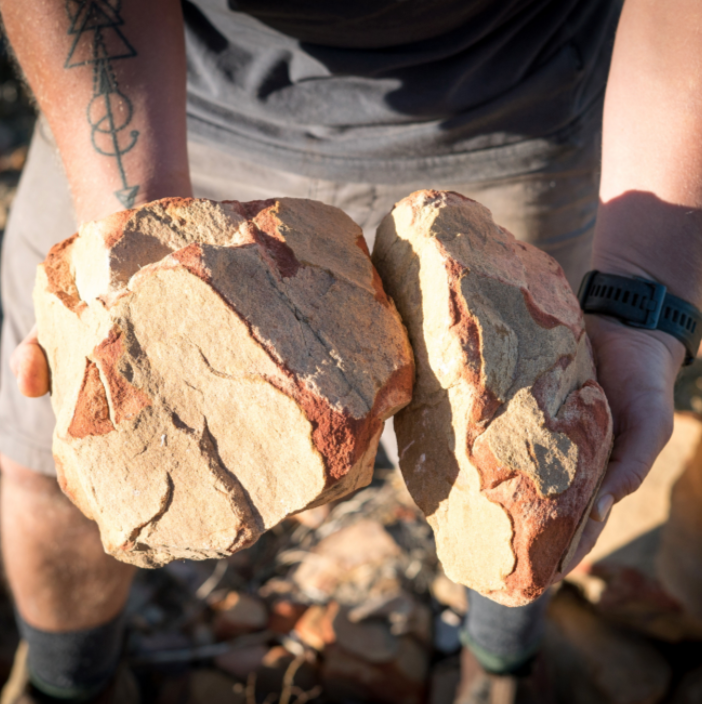We roll out a lot of “firsts” on SommSelect because one of the few hard-and-fast rules in wine is to never wear blinders—there’s just too much excitement out there to limit yourself. Don’t think that applies to you? Today’s historically celebrated, sipper/mixer/however-you-take-it “Caperitif” is the ultimate litmus test.
In the early 1900s, “Capertif” was the essential addition for many signature cocktails, but strife in South Africa soon wiped this mysterious, aromatically explosive gem off the face of the earth. Since nobody knew how to recreate it, “Capertif” soon became a deeply buried secret. For nearly 100 years, it was subsequently known as “the ghost ingredient.” Enter A.A. Badenhorst in South Africa’s Swartland, the mad scientists who recently resurrected this all-but-forgotten, botanically charged aperitif. Is it a wine? Technically, yes, but it would be a disservice to leave it at that. No wine has the ability to match the powerful, unendingly nuanced experience of today’s offer. At its core, “Caperitif” is a South African Chenin Blanc that’s fortified and then infused with a dizzying number (32+!) of botanicals: roots, herbs, flowers, barks, spices—it would take a lifetime to decipher every aroma and flavor. A rich history, a sensory journey like no other, and an extraordinary price-to-quality, “Caperitif” is the embodiment of what we strive to achieve here at SommSelect. Sip on the rocks, with a splash of club soda and citrus garnish, or experiment with its otherworldly fusion of flavor in a number of cocktails that made it world-famous 100+ years ago. Grab as many as you want—they’ll keep months after opening and your replacement bottles will last for years!
Andre Adriaan “Adi” Badenhorst is the kind of guy that you meet and never forget—he is without question one of the most well-known wine personalities in South Africa. For 46 years, his grandfather was the farm manager of Groot Constantia, which is the oldest wine estate in South Africa and was the source of Napoleon’s favorite dessert wine. Adi was raised in the vines and made his first wine at the tender age of thirteen. After his formal wine education, Adi worked at some of the most celebrated names in the northern Rhone, New Zealand, and South Africa, then served for nine years as winemaker at the famed Rustenberg Estate in Stellenbosch. In 2008, he finally set up his own shop with his cousin, Hein, on the slopes of Paardeberg, but the revival of today’s “Caperitif” required more assistance, namely that of Danish mixologist Lars-Erik Schmidt.
The making of this mysterious aperitif starts with sustainable, dry-farmed Chenin Blanc vines on their Kalmoesfontein farm. Following harvest, the grapes are pressed and fermented to form the base wine. Similar to vermouth in creation (but technically a quinquina because it contains quinine), the base wine is fortified up to 16% ABV with a neutral spirit and then aromatized by steeping 32 distinct, native botanicals in glass demijohns and old barrels. A few of the key players are cinchona bark, fynbos, and naartjie, but if it’s a complete list you’re looking for, good luck: the blend is tweaked with each batch—today’s is lot #8—because (1) they are constantly experimenting, (2) what they can forage depends on the growing season, and (3) some botanicals are illegal in America (e.g. calamus).
Antonio Galloni’s Vinous calls this a “knockout” and bets that “you can’t drink just one glass”—I’m doubling down on that. You simply cannot get a firm grasp on just how mesmerizing and distinct this aperitif is until you experience it for yourself, but we’ll try our best. It pours a light tawny color with viscous tears that cling to the glass and instantly unloads a flurry of high-toned aromatics: Orange zest, cardamom, clove, spiced pear, fruitcake, pink grapefruit, citrus blossoms, apricot, sweet mint, cinnamon rock candy, Rainier cherry, dried herbs, and the constant presence of quinine. To me, it smells exactly like the end-of-the-year holidays and that’s exactly when I would most want to savor this. The intoxicating blend of botanicals glide across your palate in a simultaneously rich, ultra-fresh style and finishes with the slightest touch of sweetness that is washed out by a pleasing bitterness. While Caperitif’s claim to fame was as a key ingredient in classic cocktails, it should not be limited to that today. There are innumerable ways to enjoy this, but I think it would be best suited in a rocks glass with club soda and a wedge of lemon as a before- or after-dinner drink. Still, don’t be afraid to experiment—that’s how this extraordinary aperitif came into existence! The best part: It’ll keep for a couple of months in the fridge after opening or many years if left unopened, so buy many and savor slowly. Cheers!



